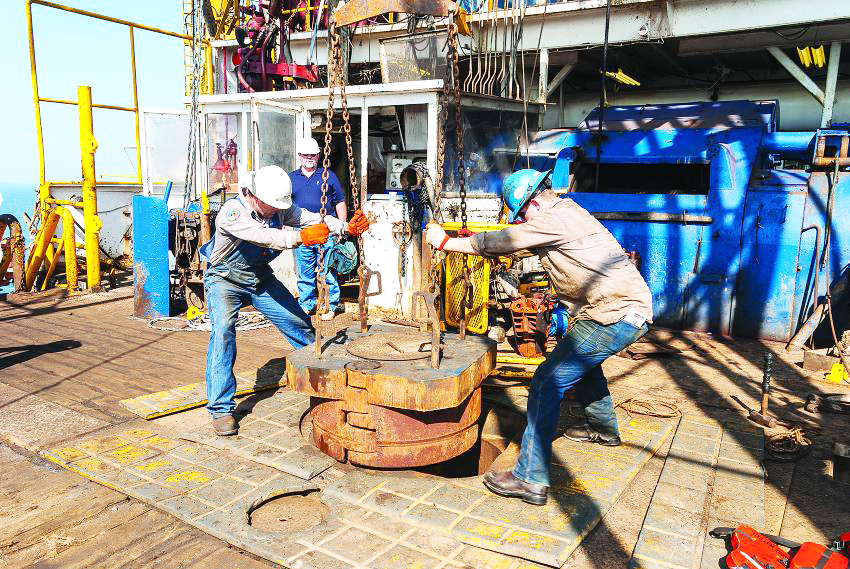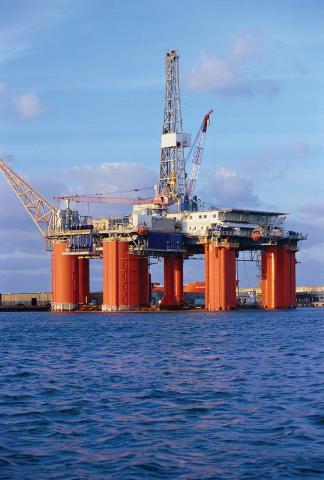At worst, unplanned downtime in a critical environment can cause a catastrophic event that negatively impacts public safety and/ or the environment on a mass scale. At best, it could mean production losses costing thousands, or even millions, of dollars. A predictive maintenance strategy that incorporates Axis technology can help companies minimize costly downtime and improve their bottom lines.

At worst, unplanned downtime in a critical environment can cause a catastrophic event that negatively impacts public safety and/ or the environment on a mass scale. At best, it could mean production losses costing thousands, or even millions, of dollars. A predictive maintenance strategy that incorporates Axis technology can help companies minimize costly downtime and improve their bottom lines.
Considering the stakes, it’s no wonder that companies are transitioning from a reactive to a preventive and even predictive maintenance strategy. But many of these companies are still relying on an ‘old-school’ route-based approach – sending technicians out at scheduled intervals to physically assess and record critical asset findings. For a typical commercial petroleum company with over 20,000 well sites, this represents a significant cost. And inevitably, critical assets will either be over-maintained or under-maintained as they rarely break-down on schedule.
When the cost of oil is low every barrel counts. But operational efficiency is key to a healthy bottom line. That’s why progressive companies are adopting a predictive maintenance strategy that includes distributed online monitoring. With advancements in automation, wireless technology, SCADA systems and solar powered hardened devices, remote data collection from permanent sensors provides much better insight on the status of critical assets and helps keep operations flowing smoothly.
Let’s look at how Axis technology is ‘fueling’ this trend
Thermal imaging for better flare stack monitoring
The controlled combustion of excess gases in the chemical and petrochemical industry is essential to eliminate pressure on critical assets. Should the flame go out, it poses a serious health and safety risk for workers – and carries a hefty fine from environmental authorities. Axis thermal cameras provide better flare stack monitoring, ensuring a stable thermal profile and proactively sending an alarm to operators if the flame decreases.
Explosion protected cameras improve health & safety
In hazardous environments, preventing injuries and fatalities is paramount – both for the safety and well-being of workers, as well as the associated downtime cost. Certified for explosion-prone applications according to all applicable international standards, Axis explosion-protected cameras allow HSE site engineers to monitor areas where accidents typically occur – such as the working of tubulars on drilling rigs. Additionally, their temperature alarm camera monitors for temperature deviations and leaks in critical assets – to prevent an incident before it occurs.
workers, as well as the associated downtime cost. Certified for explosion-prone applications according to all applicable international standards, Axis explosion-protected cameras allow HSE site engineers to monitor areas where accidents typically occur – such as the working of tubulars on drilling rigs. Additionally, their temperature alarm camera monitors for temperature deviations and leaks in critical assets – to prevent an incident before it occurs.
A new and attractively priced alternative to traditional steel housings, the AXIS F101-A XF P1367 is specifically designed for hazardous environments. Its lightweight aluminum housing is Class I/II/III, Division 1, Zone 1, ATEX and IECEx certified, it’s easy to configure remotely, and it delivers clear images in challenging light conditions. The red color also helps workers locate it to signal operators in emergency situations.
Real-time condition-based monitoring
With the advancement of video imaging and processing power, network cameras are a valuable redundancy in condition-based monitoring systems – providing visual confirmation of sensor alerts and full situational awareness in an emergency. Edge-based video analytics enable the cameras themselves to serve as a primary sensor for HSE engineers to detect e.g., occupancy levels on a drilling rig, PPE compliance, or obstructed evacuation routes.
Better communication with network speakers
With Axis network speakers, it’s easy to communicate both live and alert-based pre-recorded messages to workers in remote locations – to warn of a safety risk or instruct them to take action on a sensor alarm. With the introduction of Power-over-Ethernet (PoE) speakers, oil and gas companies also save on the maintenance and implementation cost of PA systems. What’s more, the system can scale without having to upgrade proprietary, bulky amplifier racks, and the integration of Axis speakers and cameras is a simple one-click configuration process.
Connected technology
Axis network I/O relay modules extend the functionality of any Axis device and integrate with other facility systems such as fire alarm, HVAC and BMS. This technology is particularly useful in extending the I/O signals from any field-based temperature sensor to the central SCADA system to trigger, for example, strobe lighting, loudspeaker messaging and camera recordings in an emergency.
Reliable intrusion protection
Any unauthorized physical intrusion can have a major impact on critical assets and cause downtime. With an Axis intrusion protection solution, one can safeguard the whole site – from perimeter to critical core. A combination of thermal, radar and PTZ technology detects, identifies and tracks intruders. Access control limits free movement in critical or hazardous areas, and audio capabilities with alarm-based pre-recorded messages deter any unauthorized entry.
Getting more from your technology
It all comes back to operational efficiency contributing to a healthy bottom line. A complete system of Axis video, intelligent analytics, access control and audio address all key aspects of critical infrastructure protection – intrusion, operational efficiency and health and safety – all of which present risks to unplanned downtime. By incorporating Axis solutions in the condition-based monitoring strategy, the user can more easily detect incidents before they happen and keep production up and running.
